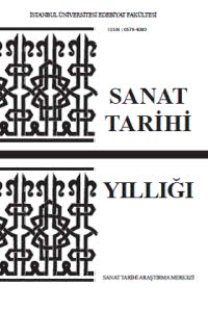Orta Karadeniz’in Savunmasında Stratejik Öneme Sahip Bir Kale: Niksar Kalesi
Topografi k, coğrafi ve stratejik özellikleri nedeniyle Niksar Kalesi,Orta Karadeniz bölümünün iç kısımlarını denetleyen ve savunan bir “garnizon”tipi yerleşim yeri olarak yüzyıllar boyunca güvenlik konusundaönemli hizmetler vermiştir. Ancak Niksar’ı sadece “kale tipi” bir yerleşimyeri olarak tanımlamak doğru olmaz. En geç Danişmendliler dönemindenberi, büyük olasılıkla da Roma veya Bizans çağından beri kale içinde biryerleşimin söz konusu olduğu gibi, yerleşimin sadece kale içiyle sınırlıkalmadığı sur dışındaki mevcut yapı izlerinden anlaşılmaktadır.Surlarda ve surları tahkim eden burçlarda, kale duvarları içindekiyapılarda farklı duvar örgülerine rastlanılması kalenin geçirmiş olduğuonarım ve ilavelere işaret etmektedir. Yalnız kaleye dair verilebilecek teksomut tarih, 1198 yılıdır ve Anadolu Selçuklu Sultanı II. Rükneddin SüleymanŞah dönemine ait kitabede okunmaktadır.Tarihsel açıdan ele alındığında, iç kalenin ortasını teşkil eden bölümünkalenin en erken tarihli bölümü olması kuvvetle muhtemeldir. Bu bölümdemevcut medrese, türbe, hamam, iç kale mescidi dışında, kaleye ilgili idarive muhafız yapılarının bulunması ihtimal dâhilindedir. Daha erken tarihliolduğu düşünülen iç kalenin orta bölümünün batısına Danişmendilerdöneminde yeni yapılar inşa edilerek yerleşimin özellikle 12. yüzyılda buyöne doğru geliştiğine ve kalenin bu dönemde yoğun olarak kullanılan biryerleşim yeri olduğuna işaret etmektedir.Kaledeki bazı yapıların inşa edildiği tarih ve hatta işlevi konusutartışmalıdır. Kalede bulunması kuvvetle muhtemel zindanın yeri henüztahmin edilememektedir. Ortaçağ kalelerinden Antep, Afyon, Harput,Şebinkarahisar ve Amasya kalelerinde zindanın olduğu bilinmektedir.Bu kalelerden özellikle de Harput ve Amasya’daki zindanlara tünellerleulaşılmaktadır. Bu sebeple de bu kaleye ait tünellerde yapılacak çalışmalartünelle bağlantılı bir zindanın bulunup bulunmadığı sorusuna da daha netcevap verecektir. Özellikle de han, mutfak, hapishane ve tüneller ile içkalenin orta bölümündeki tonoz örtülü bölümde detaylı çalışmalara hattakazılara ihtiyaç duyulmaktadır. Ancak bu şekilde yapılacak olan yorumlarile Niksar Kalesi’ni tanımlamak ve tarihlendirmek daha sağlam bir zemineoturabilir.Sonuç olarak bu makalede, kalenin tarihsel gelişimi, kaledeki işlevitartışmalı bazı yapıların fonksiyonunun ne olabileceği ve aynı zamandakalenin ve kale içindeki yapıların tarihlendirme problemi ele alınmış veNiksar Kalesi’nin mimarisi detaylı olarak tanıtılmıştır.
Anahtar Kelimeler:
Niksar, Kale, Ortaçağ, Kaleli Kent, Savunma Yapıları
Niksar Castle: A Strategically Important Stronghold in Defense of Central Black Sea
Due to its topographical, geographical, and strategic advantages, NiksarCastle provided signifi cant security services for centuries as a “garrison”settlement, which controlled and defended the inner regions of the CentralBlack Sea region. Nevertheless, it may not be accurate to describe Niksarmerely as a “castle” settlement. There had been a settlement within thecastle since Danishmendi period the latest and most probably since theRoman or Byzantine periods, and that current structural remains outsidethe walls indicate that settlement was not limited to the inner part of thefortress.Diff erent masonry works as observed in the walls and bastions that fortified the walls and buildings inside the castle confi rm that the castle underwentrepairs and modifi cations in time. However the only discrete datein witness of the above is the year 1198, which is read on an inscriptionpertaining to the period of Rukneddin Suleiman Shah, Sultan of AnatolianSeljuks.Historically speaking, it is most probably that the section in the centerof the citadel is the earliest dated part of the castle. It is likely that therewere administrational and guardsmen buildings of the castle in addition tothe current madrasa, tomb, bath, and citadel masjid. The new buildings aserected by Danishmends to the west of the earlier dated central section ofthe castle indicate that the settlement was extended to the said directionespecially in the 12th Century and that the castle had been a frequently usedsettlement throughout that period.There is an ongoing debate as regards the date and even function of certainbuildings within the castle. The dungeon, a most expected part of anycastle, could not have been located yet. It is well established that castlesfrom the Middle Age, such as Antep, Afyon, Harput, Şebinkarahisar, andAmasya had dungeons. The dungeons were accessed via tunnels especiallyin Harput ve Amasya castles. Therefore, exploratory work on the tunnelsof the castle might provide a clear answer to the question of whether therewas a dungeon in the castle. Detailed work and even excavations are neededespecially at inn, kitchen, prison, and tunnels as well as at the vaultcoveredsection in the middle of the citadel. Only upon comments basedon such work a solid foundation for any accurate description and date forNiksar Castle may be provided.In conclusion, the present paper addresses the historical development ofNiksar Castle, what might be the true function of certain buildings withinthe castle, the functions of which have been debated, and at the same timethe problem of dating the castle and certain buildings inside it, with a detailedpresentation of architectural characteristics of castle.
Keywords:
Niksar, Castle, Middle Age, Castle Settlement, Defensive Buildings,
- ISSN: 0579-4080
- Yayın Aralığı: Yıllık
- Başlangıç: 1964
- Yayıncı: İstanbul Üniversitesi
Sayıdaki Diğer Makaleler
Az Bilinen Bir Örnek: Edremit Kurşunlu Cami
Eminönü/Hocapaşa Safvetî Tekkesi
İstanbul Üniversitesi Merkez Kampüsü’nde Bulunan Taş Eserler
Ayşe DENKNALBANT ÇOBANOĞLU, Ü. Melda Ermiş, Sevgi PARLAK, Akın TUNCER
Orta Karadeniz’in Savunmasında Stratejik Öneme Sahip Bir Kale: Niksar Kalesi
Eminönünü Muhsinzade (Muhsinoğlu) Hanı
